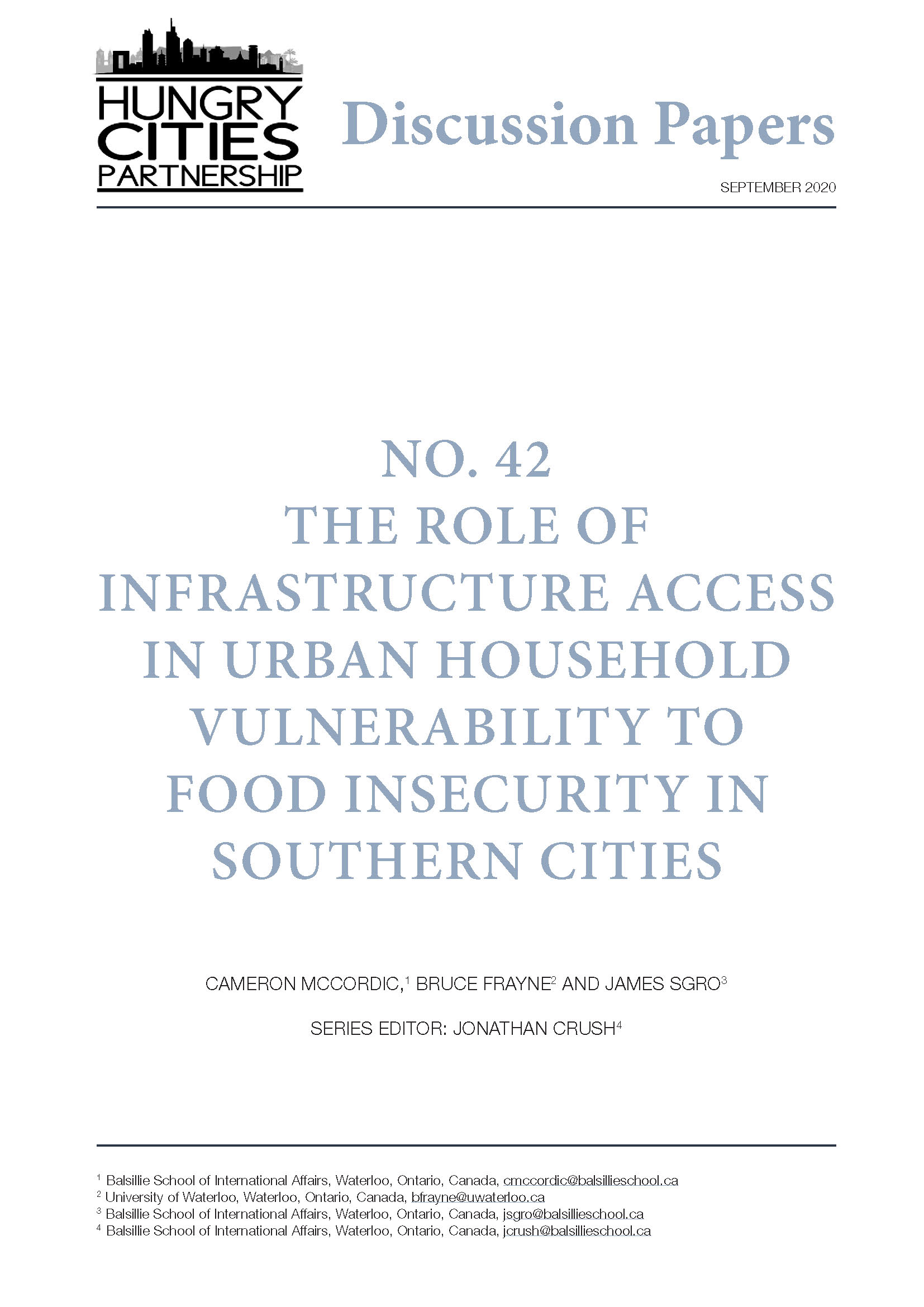The geographical concentration of poverty in informal neighbourhoods across cities is a common socio-economic feature of the urban form. Many of these impoverished areas also suffer from limited access to urban infrastructure. Given the expense and planning necessary to develop urban infrastructure, these areas are socially vulnerable in part because of their exclusion from urban master plans. This vulnerability is made more severe by the knock-on impacts of limited infrastructure access on other aspects of human insecurity. This paper uses HCP data to assess the predictive relationship between household infrastructure access and food insecurity across five case-study cities (Mexico City, Kingston, Maputo, Nairobi, and Nanjing). It determines the food security status of households with limited infrastructure access and finds that access to infrastructure is not conditionally independent of any measured characteristics of household heads. The observed relationship between urban infrastructure and food insecurity across cities in the Global South highlights the importance of urban planning as a means of influencing future urban vulnerability.

